In Brief
The arsenal of science instruments on board any spacecraft is carefully planned, built and tested during the mission’s development – a long time before it is launched into space. But ESA’s Mars orbiters are both getting a new science capability, years after their launch to the Red Planet! How so? Mission control teams have now demonstrated that the short-range radios on Mars Express and the ExoMars Trace Gas Orbiter, normally used to communicate with landers and rovers on the surface, can be used in tandem to probe the Martian atmosphere.
How are radios used for science?
Normally, ESA’s Mars Express (MEX) spacecraft waits until it has a clear view of Earth before transmitting signals across space, so as to avoid disruption from the Martian atmosphere. But we can also use this disruption, and the fact we know characteristics of the original signal sent by the spacecraft very well, to study the temperature, pressure and other properties of the slice of Martian atmosphere through which it passes.
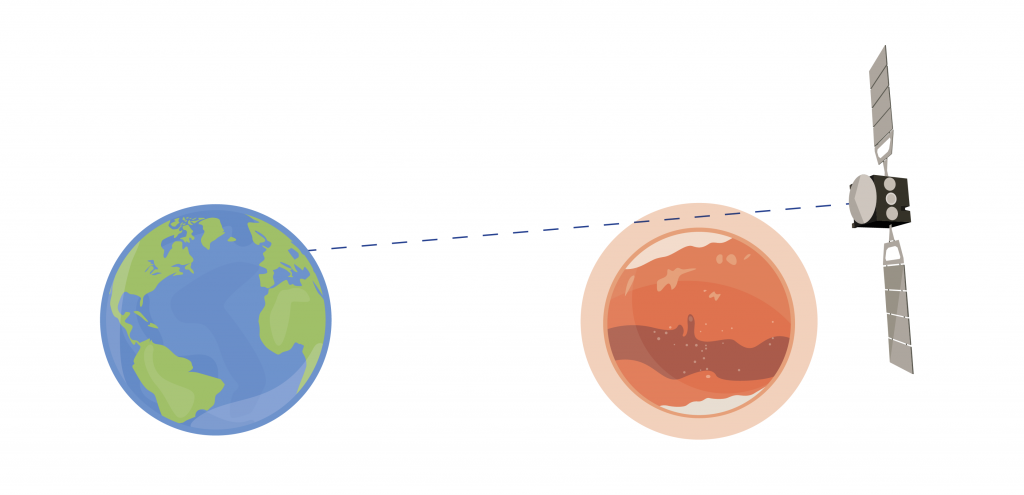
to Earth through the martian atmosphere. Image credit: ESA/S. Poletti
This radio science technique is limited by the fact that Mars Express is not always in a position where its radio beam to Earth will pass through the Martian atmosphere – which is usually a good thing for getting important science data gathered by its instruments back safely!
It is also limited by the fact that the vast space between Earth and Mars, and Earth’s own atmosphere, also alter the radio signal. It can be tough to work out which changes were solely due to the Martian atmosphere. And both of these limitations are due to the fact the antenna receiving the signal is always stuck in the same place – on Earth’s surface.
But what if it wasn’t?
18 years’ worth of science in two months
What if the antenna receiving the radio signal was also in orbit around Mars?
Satellites around Earth have used a similar method to study Earth’s atmosphere, and NASA conducted a test to prove that a radio signal could be sent between two Mars orbiters using their Odyssey and MRO spacecraft in 2007. Since 2016, ESA has also had two spacecraft orbiting Mars, so the Mars Express and ExoMars Trace Gas Orbiter (TGO) mission control teams set out to see if and how ESA could use them to conduct new radio science at the Red Planet.
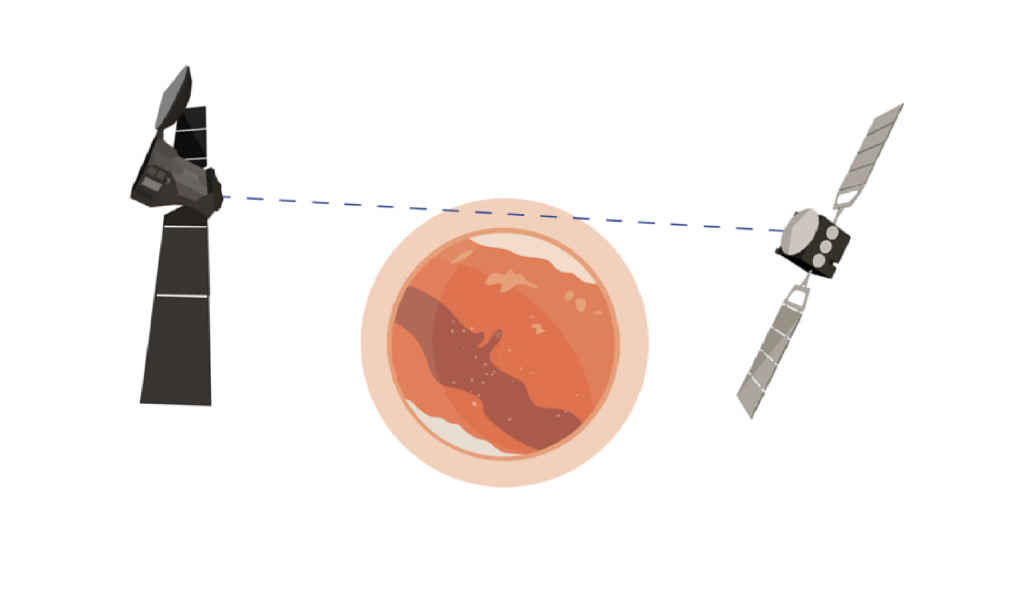
the martian atmosphere. Credit: ESA/S. Poletti
If all the possible scenarios in which the two spacecraft can ‘see’ each other are used, the radio science conducted using the two in just two months would exceed that produced in 18 years using just Mars Express! Of course, the spacecraft are busy doing other important jobs at Mars, so not every single opportunity can be used for atmospheric radio science, but the technique is clearly scientifically valuable.
Chatting at Mars
The large antennas that the two spacecraft use to communicate with Earth use incompatible frequencies for ‘speaking’ to each other. This is a feature, not a bug, as it prevents their signals from interfering with each other when they are both transmitting data to Earth at the same time.
But Mars Express and TGO both also have short-range radios they use to communicate with landers and rovers on the Martian surface. These radios use the same frequencies, and so, after some clever tweaks to the systems on both spacecraft, they can now be used to exchange signals with one another. Engineers also determined that, for technical reasons, Mars Express would transmit the signals while TGO receives them.
Testing, testing, come in Beagle2!
For the first set of tests, carried out earlier in 2021, Mars Express needed to transmit a signal to TGO, but the only signal it had on hand was the ‘hail’ signal it had pre-installed to shout out to the lander it carried to Mars almost two decades ago, which was lost on landing – Beagle2.
Following extensive discussions, testing, planning and preparation, the first test of the MEX-TGO radio link has been carried out – and it worked perfectly!
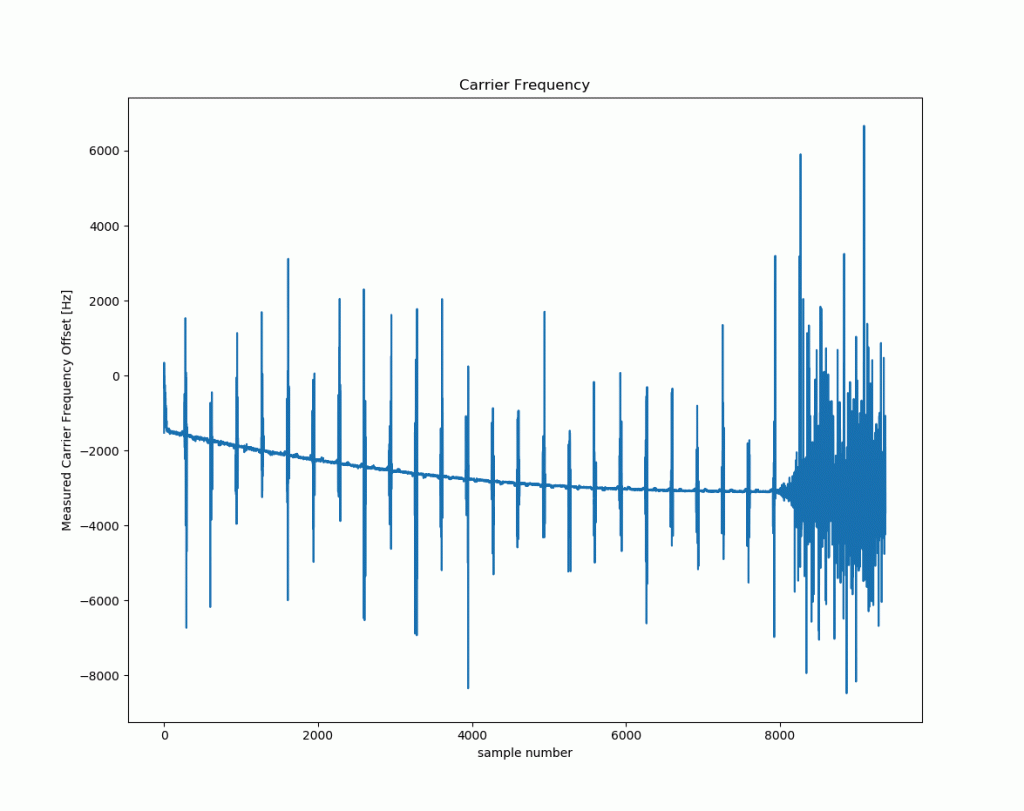
New trick for an old dog
Further tests were carried out running through August 2021 to better understand how to plan and conduct experiments using this new ‘radio science’ capability. As the hail signal carried some data on it, it was quickly deemed too noisy to be used for radio science. A clean signal with no data on it would be needed, but this wasn’t something Mars Express’s MELACOM radio unit had available.
The original manufacturers of MELACOM, QinetiQ, were contacted to see if such an ‘empty’ signal could be added via a software patch. After an investigation, they concluded that it could, and the spare MELACOM radio unit on Earth was retrieved from storage – and the 18-year-old unit’s 1750A assembler source code was opened up. Programming for an empty, ‘carrier only’ signal was added, tested and then sent to the spacecraft’s operations team at ESA’s ESOC mission control in Darmstadt, Germany. From there, the patch was later uploaded, and it worked just fine. The end result is a much clearer signal that is better suited for radio science.
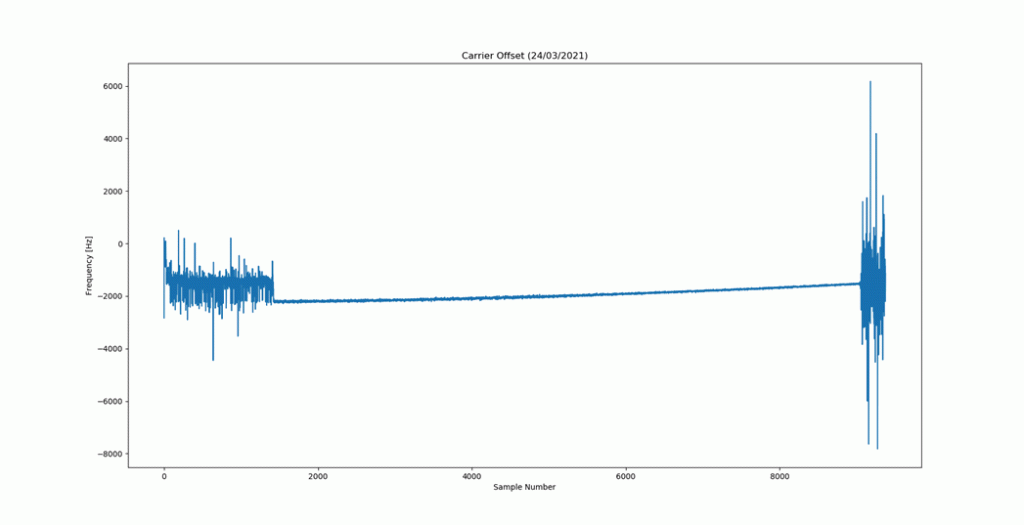
Future plans
For TGO at the other end of the signal, a team of experts at ESA’s ESTEC technical centre in The Netherlands is now overseeing the development of new processing software specifically designed for radio science. Additional tests are planned in Spring 2022 to provide more data to help design this new processing software.
These new radio experiments are the first of their kind at Mars and are a great example of how existing equipment can find uses beyond the wildest imagination of its original designers.
They also show how spacecraft like Mars Express and TGO often turn out to be worth far more than the sum of their parts, as teams at ESA and elsewhere in Europe continue to work together to find clever new – and valuable – ways to use them to explore the Red Planet.


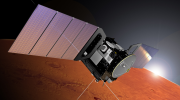

Discussion: no comments